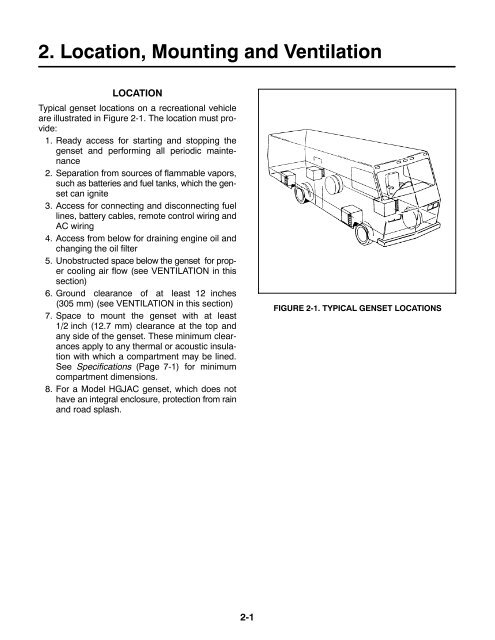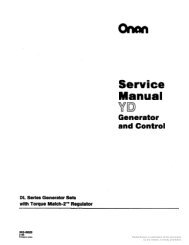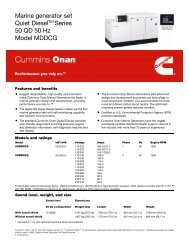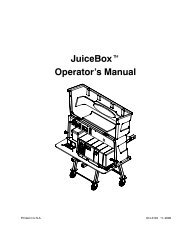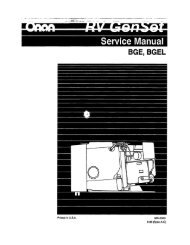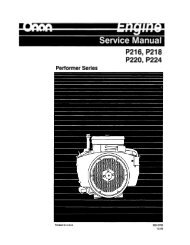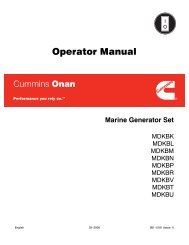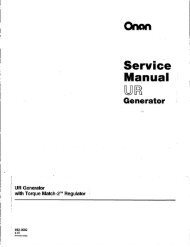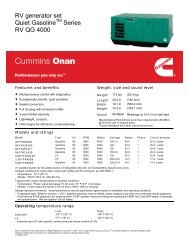Caution: This document contains mixed page sizes ... - Cummins Onan
Caution: This document contains mixed page sizes ... - Cummins Onan
Caution: This document contains mixed page sizes ... - Cummins Onan
Create successful ePaper yourself
Turn your PDF publications into a flip-book with our unique Google optimized e-Paper software.
2. Location, Mounting and Ventilation<br />
LOCATION<br />
Typical genset locations on a recreational vehicle<br />
are illustrated in Figure 2-1. The location must provide:<br />
1. Ready access for starting and stopping the<br />
genset and performing all periodic maintenance<br />
2. Separation from sources of flammable vapors,<br />
such as batteries and fuel tanks, which the genset<br />
can ignite<br />
3. Access for connecting and disconnecting fuel<br />
lines, battery cables, remote control wiring and<br />
AC wiring<br />
4. Access from below for draining engine oil and<br />
changing the oil filter<br />
5. Unobstructed space below the genset for proper<br />
cooling air flow (see VENTILATION in this<br />
section)<br />
6. Ground clearance of at least 12 inches<br />
(305 mm) (see VENTILATION in this section)<br />
7. Space to mount the genset with at least<br />
1/2 inch (12.7 mm) clearance at the top and<br />
any side of the genset. These minimum clearances<br />
apply to any thermal or acoustic insulation<br />
with which a compartment may be lined.<br />
See Specifications (Page 7-1) for minimum<br />
compartment dimensions.<br />
8. For a Model HGJAC genset, which does not<br />
have an integral enclosure, protection from rain<br />
and road splash.<br />
FIGURE 2-1. TYPICAL GENSET LOCATIONS<br />
2-1


